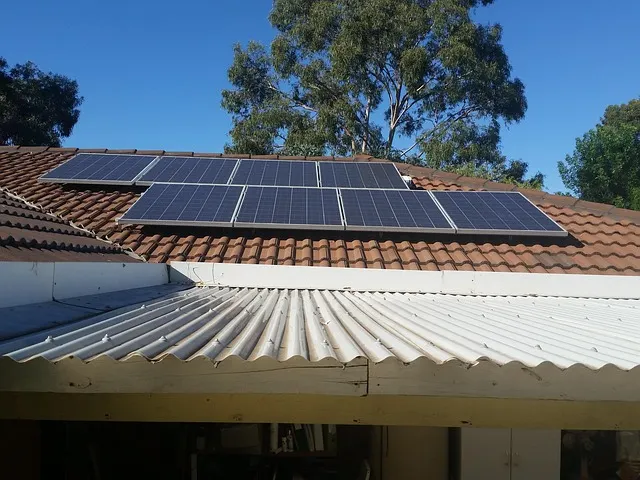If you’ve been thinking about going solar, you’re probably wondering: How much does it really cost to install solar panels in 2025? The truth is, prices have dropped significantly in recent years, making solar more affordable than ever. With improved efficiency, government incentives, and lower manufacturing costs, homeowners are finally seeing solar as a long-term investment rather than a luxury.
Understanding Solar Panel Installation Costs
Average Cost per Watt in 2025
As of 2025, the average cost to install solar panels ranges from $2.30 to $3.10 per watt. This means a standard 6kW residential system costs between $13,800 and $18,600 before any tax credits or incentives.
System Size and Total Price
Larger systems generally cost more overall but offer lower costs per watt. For instance, a 10kW system might cost around $27,000, but because of scale, it delivers greater value per watt than smaller setups.
Location Matters
Your region plays a huge role in solar pricing. States like California, Texas, and Florida tend to have lower installation costs thanks to competition among installers and abundant sunshine.
Components That Affect the Total Cost
1. Solar Panels
The type of panel you choose—monocrystalline, polycrystalline, or thin-film—affects your total cost. Monocrystalline panels, known for their efficiency, tend to be the most expensive but also the most space-efficient.
2. Inverters
Inverters convert DC electricity from panels into usable AC power. Expect to pay $1,000–$3,000 for quality inverters, depending on system size.
3. Mounting Hardware
Mounting brackets, rails, and other materials typically add $500–$1,500 to the cost.
4. Batteries and Storage
Adding a solar battery (like a Tesla Powerwall) can cost $7,000–$12,000, but it offers energy independence and backup power.
5. Labor and Permits
Installation and permit fees make up around 10–20% of your total cost.
Residential Solar Costs in 2025
A typical U.S. home uses around 10,000–12,000 kWh per year, requiring a 6–8 kW system. After incentives, the total cost usually falls between $10,000 and $15,000. Roof-mounted systems are generally cheaper than ground-mounted ones, which need extra hardware and space.
Commercial Solar Costs
For businesses, upfront costs are higher, averaging $1.75–$2.50 per watt for large installations. However, commercial users benefit from accelerated depreciation, allowing them to recover a significant portion of the investment within a few years.
Government Incentives and Tax Credits
The Federal Investment Tax Credit (ITC) remains one of the most significant incentives in 2025, offering a 30% credit on the total system cost. Many states also offer rebates, net metering, or sales tax exemptions, reducing costs even further.
Solar Financing Options
You can go solar in several ways:
- Cash Purchase – Best ROI, no interest.
- Solar Loan – Own your system, pay over time.
- Lease or PPA – Low upfront cost, but you don’t own the system.
Choosing the right option depends on your financial goals.
Hidden Costs to Watch Out For
Be sure to budget for:
- Roof repairs before installation
- Occasional maintenance (around $150–$300/year)
- Potential electrical upgrades
The Cost of Solar Batteries in 2025
Solar battery prices have dropped by about 30% since 2020. A standard home battery setup costs $8,000–$10,000, including installation. While optional, batteries can help you avoid blackouts and reduce dependence on the grid.
How Much Can You Save With Solar Panels?
On average, solar users save $1,200–$1,800 per year on electricity. Most systems pay for themselves within 6–9 years, depending on local rates and incentives.
Regional Cost Differences
States like Arizona, Nevada, and Florida offer the best combination of sunshine and affordability, while New York and Massachusetts tend to have higher upfront costs but stronger incentives.
Factors Driving Solar Prices Down in 2025
- More efficient photovoltaic technology
- Global competition lowering manufacturing costs
- Larger-scale solar adoption reducing installation overhead
Comparing Solar Quotes
Always get at least three quotes from certified installers. Compare:
- Total cost per watt
- Warranty (panels and inverter)
- Estimated production and savings
Real-Life Example: 6kW System Breakdown
| Component | Estimated Cost (USD) |
|---|---|
| Panels | $6,500 |
| Inverter | $2,000 |
| Mounting | $1,000 |
| Labor & Permits | $2,500 |
| Total | $12,000–$14,000 (before incentives) |
After applying the 30% ITC, the net cost drops to around $9,000–$10,000.
Conclusion
So, how much does it really cost to install solar panels in 2025? Depending on your system size, location, and incentives, expect to spend $10,000–$20,000 for most homes. With falling prices, strong incentives, and higher energy costs, there’s never been a better time to switch to solar power.
FAQs
1. What is the average cost per watt for solar panels in 2025?
Between $2.30 and $3.10 per watt, depending on your location and system size.
2. How long does it take to break even on a solar investment?
Typically 6 to 9 years, depending on your local energy rates and incentives.
3. Are solar panels still worth it in 2025?
Absolutely! They provide long-term savings, increase property value, and promote energy independence.
4. What’s the difference between leasing and buying solar panels?
Leasing means you pay monthly for solar power without owning the system, while buying lets you own it outright and claim all incentives.
5. How do I find the best solar installer near me?
Check reviews, certifications, and warranties before choosing. Always get multiple quotes.

